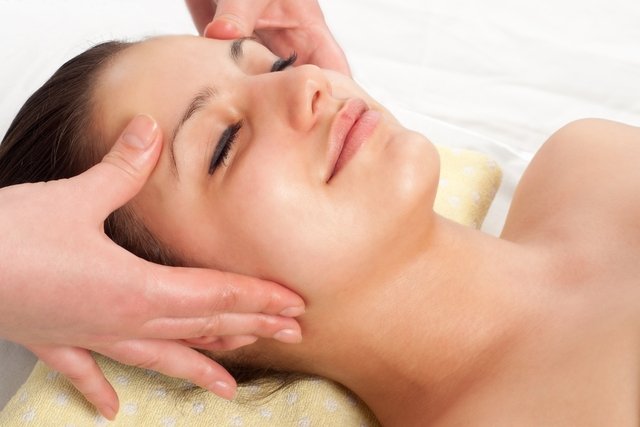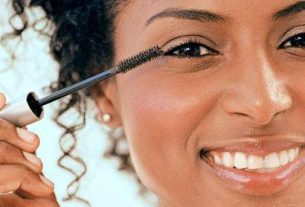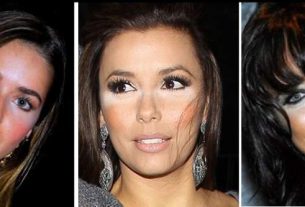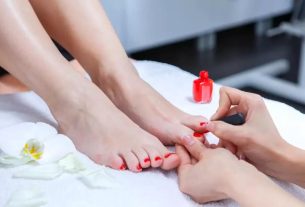To perform facial lymphatic drainage, you must start near the collarbone and go up little by little, through the neck, around the mouth, cheeks, corners of the eyes and finally, on the forehead.
Lymphatic drainage on the face is indicated to improve the appearance of the skin, leaving it cleaner and more luminous, eliminate facial swelling, relieve pain and discomfort after plastic surgery in the ears, mouth, eyes or nose because it works to reduce bruising , swelling, and bags under the eyes, reducing recovery time.
Lymphatic drainage on the face helps eliminate toxins throughout the face through the lymphatic system. It should be done with light movements and can be done once a week by the person themselves or in clinics specializing in this type of massage.
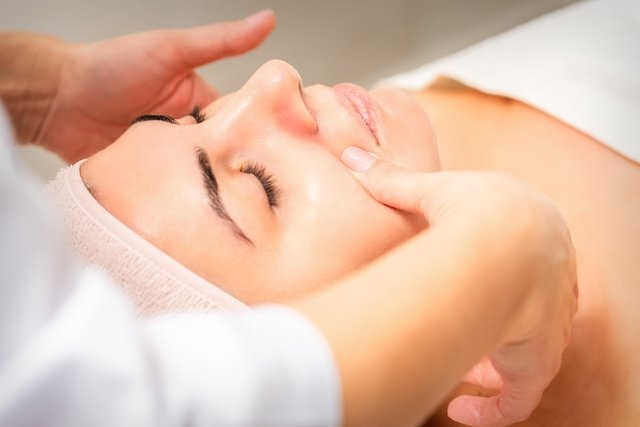
8 steps of facial lymphatic drainage
Facial drainage can be performed by the person themselves, facing the mirror, and is easy to carry out, however, the steps indicated below must be followed in order for it to have the expected effect.
1st step: Deep breathing
When starting the lymphatic massage on the face, you should take a deep breath, inhaling the air slowly through the nostrils and exhaling through the mouth.
This breathing helps to stimulate the lymphatic system throughout the body, which allows the removal of fluids from the face to be enhanced.
2nd step: Stimulation of the venous angle
Facial lymphatic drainage necessarily begins in the neck:
- With circular movements or pressure with the tips of your fingers in the region just above the clavicles, slowly and steadily, making circular movements 6 to 10 times.
Stimulating this region is essential to stimulate the venous angle, which is responsible for redirecting lymph to the bloodstream, close to the heart.
Watch the following video with physiotherapist Marcelle Pinheiro with tips on how to perform lymphatic drainage on the face:
3rd step: Draining the neck
To perform lymphatic drainage in the neck you must:
- Drain the lateral region of the neck, with circular movements, starting from the closest part of the neck, pressing the sternocleidomastoid muscle;
- Also drain the neck area, as if ‘pushing’ the lymph from the entire neck to the clavicle.
Lymphatic drainage of the neck can be done on one side at a time or on both sides at the same time.
4th step: Draining the chin and mouth
Draining the chin and mouth should be done as follows:
- Position the tips of the index and middle fingers on the central part of the chin and perform circular movements, 6 to 10 times;
- Position your fingertips under your lower lip, sliding your fingers to the base of your chin;
- With circular movements that start at the corner of the mouth, take the lymph to the center of the chin;
Then, you should position your fingers between the base of the nose and the upper lip, and with circular movements direct the lymph to the center of the chin, outlining the mouth.
5th step: Draining the cheeks and nose
To drain the cheeks and nose, you must:
- Position your fingers close to the ears and gently press this region 6 to 10 times with circular movements;
- Place your fingertips on the side of the cheek, draining towards the ear;
- Place your fingertips on the side of your nose and, using circular movements, direct the lymph to the corners of your ears.
- Position your fingertips under the lower eyelid and, using circular movements, slide them close to the ears.
Lymphatic drainage movements must always be gentle, not putting too much pressure on the region.
6th step: Draining the eyes
Lymphatic drainage of the eyes should be done as follows:
- Position your fingers on the side of the face, and use circles to slide from the outer corner of the eye to the back of the ears;
- Position your fingers on the upper eyelid and, using circular movements, direct the lymph towards the ears.
At the end, the proximity of the ears (auricular ganglia) must be stimulated again.
7th step: Forehead drainage
To perform lymphatic drainage of the forehead, you must:
- Position your fingertips in the center of the forehead, close to the eyebrows and with circular movements direct the lymph towards the ears;
To finish, the part close to the ears and the upper part of the clavicles must be stimulated again.
8th step: Stimulation of the venous angle
Upon completion of lymphatic drainage on the face, the venous angle must be stimulated again:
- Repeat the stimulation of the venous angle with pressure movements with the fingertips in cycles of 5 to 7 repetitions.
The duration of facial lymphatic drainage is relatively quick, taking around 10 minutes, but although the person can do it themselves, better results are observed if the technique is performed by a professional, especially when it is indicated after plastic surgery. on the face or head. See also how to perform lymphatic drainage in the body.
When to do lymphatic drainage on the face
Facial lymphatic drainage is indicated especially when the face is swollen, a common situation that can happen:
- During the menstrual period;
- After dental treatment such as a root canal or tooth extraction;
- In case of liquid retention;
- When sleeping less than 5 or more than 8 hours;
- After crying;
- Injuries or trauma to the face;
- In case of flu, rhinitis or sinusitis;
- After head or neck surgery;
- After plastic surgery on the face or neck.
The face can also become swollen, more sensitive and reddened after waxing the upper lip, face or eyebrows and this technique helps to reduce these effects, leaving the skin more beautiful, favoring the penetration of cosmetics applied to the skin.
Furthermore, by removing toxins and excess liquid from the face, makeup stays better and adheres better to the skin.
Who shouldn’t do
Facial lymphatic drainage brings benefits to people of all ages, including teenagers, with acne problems, as it promotes the reduction and control of pimples, maintaining the appearance of clean and youthful skin for longer.
However, this facial massage must be carried out with great caution in case of cancer and should not be carried out in case of severe acne with grades 3 or 4 and when there are open wounds on the face, due to the risk that they may become infected.

Sign up for our newsletter and stay up to date with exclusive news
that can transform your routine!
Warning: Undefined array key "title" in /home/storelat/public_html/wp-content/plugins/link-whisper-premium/templates/frontend/related-posts.php on line 12
Warning: Undefined array key "title_tag" in /home/storelat/public_html/wp-content/plugins/link-whisper-premium/templates/frontend/related-posts.php on line 13

